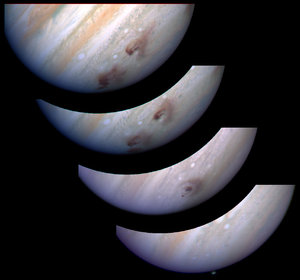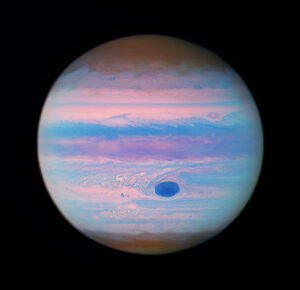Accept all cookies Accept only essential cookies See our Cookie Notice

About ESA
The European Space Agency (ESA) is Europe’s gateway to space. Its mission is to shape the development of Europe’s space capability and ensure that investment in space continues to deliver benefits to the citizens of Europe and the world.
Highlights
ESA - United space in Europe
This is ESA ESA facts Member States & Cooperating States Funding Director General Top management For Member State Delegations European vision European Space Policy ESA & EU Space Councils Responsibility & Sustainability Annual Report Calendar of meetings Corporate newsEstablishments & sites
ESA Headquarters ESA ESTEC ESA ESOC ESA ESRIN ESA EAC ESA ESAC Europe's Spaceport ESA ESEC ESA ECSAT Brussels Office Washington OfficeWorking with ESA
Business with ESA ESA Commercialisation Gateway Law at ESA Careers Cyber resilience at ESA IT at ESA Newsroom Partnerships Merchandising Licence Education Open Space Innovation Platform Integrity and Reporting Administrative Tribunal Health and SafetyMore about ESA
History ESA Historical Archives Exhibitions Publications Art & Culture ESA Merchandise Kids Diversity ESA Brand Centre ESA ChampionsLatest
Space in Member States
Find out more about space activities in our 23 Member States, and understand how ESA works together with their national agencies, institutions and organisations.
Science & Exploration
Exploring our Solar System and unlocking the secrets of the Universe
Go to topicAstronauts
Missions
Juice Euclid Webb Solar Orbiter BepiColombo Gaia ExoMars Cheops Exoplanet missions More missionsActivities
International Space Station Orion service module Gateway Concordia Caves & Pangaea BenefitsLatest
Space Safety
Protecting life and infrastructure on Earth and in orbit
Go to topicAsteroids
Asteroids and Planetary Defence Asteroid danger explained Flyeye telescope: asteroid detection Hera mission: asteroid deflection Near-Earth Object Coordination CentreSpace junk
About space debris Space debris by the numbers Space Environment Report In space refuelling, refurbishing and removingSafety from space
Clean Space ecodesign Zero Debris Technologies Space for Earth Supporting Sustainable DevelopmentLatest
Applications
Using space to benefit citizens and meet future challenges on Earth
Go to topicObserving the Earth
Observing the Earth Future EO Copernicus Meteorology Space for our climate Satellite missionsCommercialisation
ESA Commercialisation Gateway Open Space Innovation Platform Business Incubation ESA Space SolutionsLatest
Enabling & Support
Making space accessible and developing the technologies for the future
Go to topicBuilding missions
Space Engineering and Technology Test centre Laboratories Concurrent Design Facility Preparing for the future Shaping the Future Discovery and Preparation Advanced Concepts TeamSpace transportation
Space Transportation Ariane Vega Space Rider Future space transportation Boost! Europe's Spaceport Launches from Europe's Spaceport from 2012Latest

Hubble eyes new dark spot on Jupiter
Thank you for liking
You have already liked this page, you can only like it once!
This Hubble picture, taken on 23 July, is the sharpest visible-light picture taken of the atmospheric debris from a comet or asteroid that collided with Jupiter on 19 July. This is Hubble's first science observation following its repair and upgrade in May. The image was taken with the new Wide Field Camera 3.
The combination of the Hubble data with mid-infrared images from ground-based telescopes will give astronomers an insight into changes of the vertical structure of Jupiter's atmosphere due to the impact. The expanding spot is about twice the length of the whole of Europe.
First discovered by Australian amateur astronomer Anthony Wesley, the feature is the impact site and "backsplash" of material from a small object that plunged into Jupiter's atmosphere and disintegrated.
The only other time in history such a feature has been seen on Jupiter was in 1994 during the collision of fragments from comet Shoemaker-Levy 9. The spot looks strikingly similar to comet Shoemaker-Levy 9's impact features. The details seen in the Hubble view shows lumpiness in the debris plume caused by turbulence in Jupiter's atmosphere.
The impactor is estimated to be the size of several football fields. The force of the explosion on Jupiter was thousands of times more powerful than the suspected comet or asteroid that exploded in June 1908 over the Tunguska River Valley in Siberia.
This is a natural colour image of Jupiter as seen in visible light.
-
CREDIT
NASA, ESA, and H. Hammel (Space Science Institute, Boulder, Colorado) and the Jupiter Comet Impact Team -
LICENCE
ESA Standard Licence

Comet Shoemaker-Levy 9 approaches Jupiter

Evolution of D/G Impact Sites on Jupiter

Jupiter G impact evolution

Water in Jupiter’s atmosphere















 Germany
Germany
 Austria
Austria
 Belgium
Belgium
 Denmark
Denmark
 Spain
Spain
 Estonia
Estonia
 Finland
Finland
 France
France
 Greece
Greece
 Hungary
Hungary
 Ireland
Ireland
 Italy
Italy
 Luxembourg
Luxembourg
 Norway
Norway
 The Netherlands
The Netherlands
 Poland
Poland
 Portugal
Portugal
 Czechia
Czechia
 Romania
Romania
 United Kingdom
United Kingdom
 Slovenia
Slovenia
 Sweden
Sweden
 Switzerland
Switzerland

























